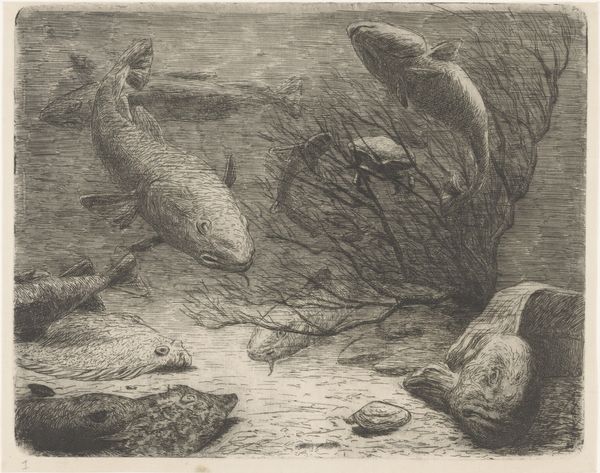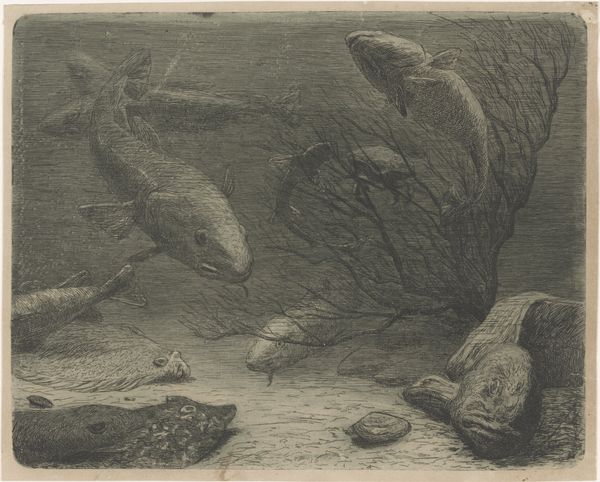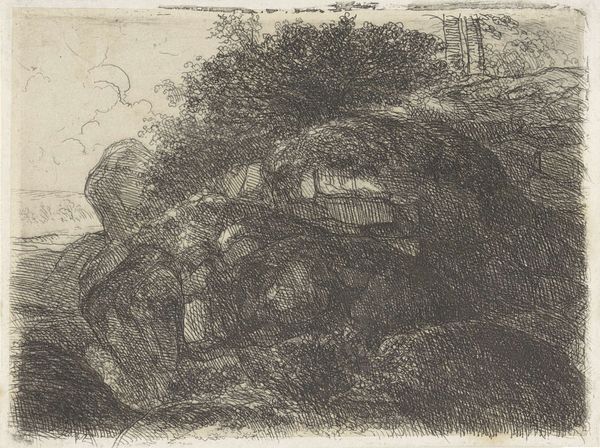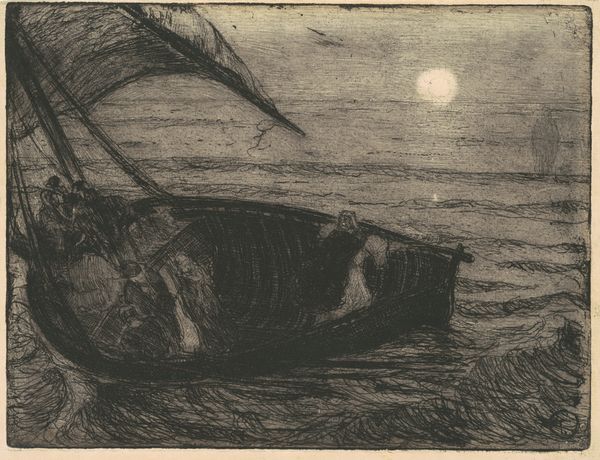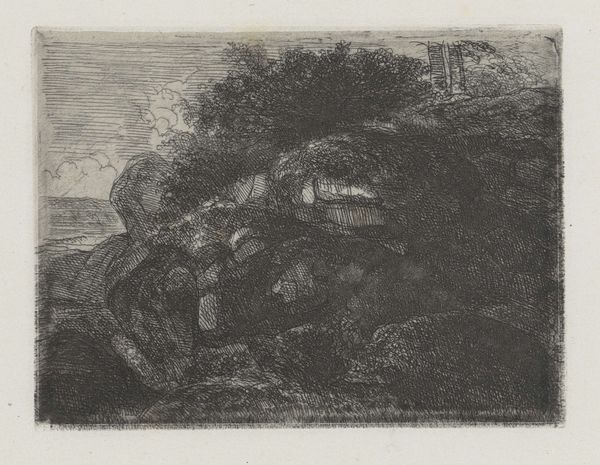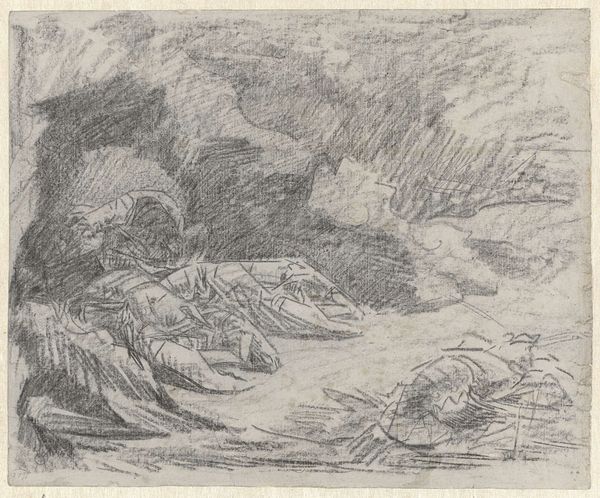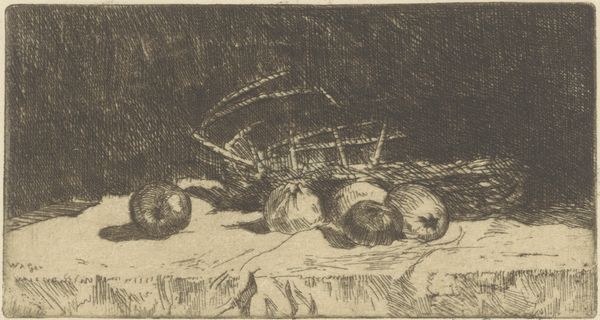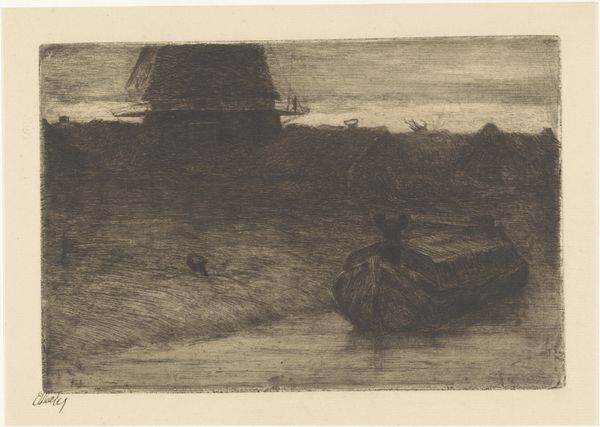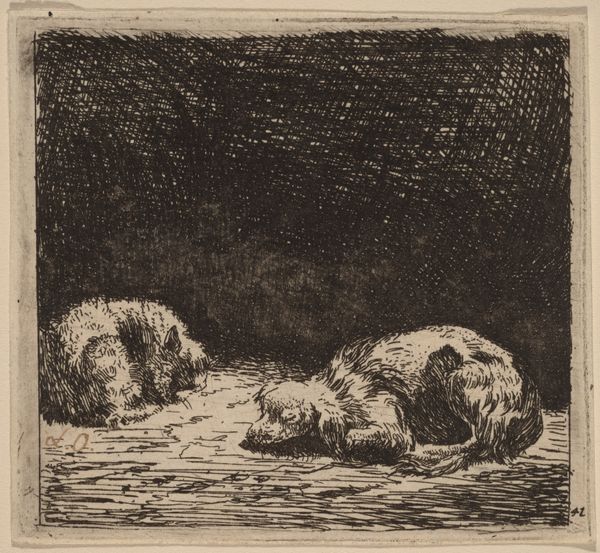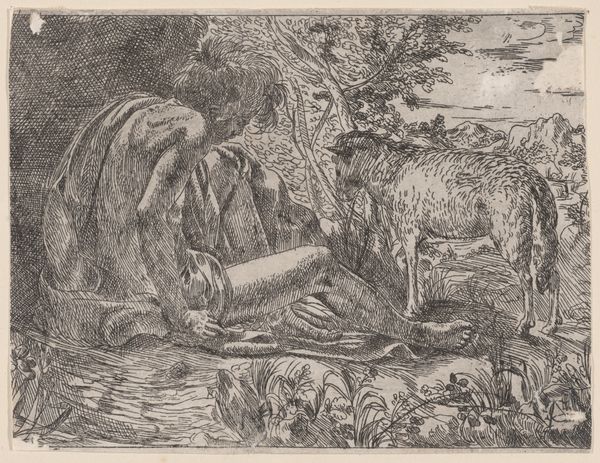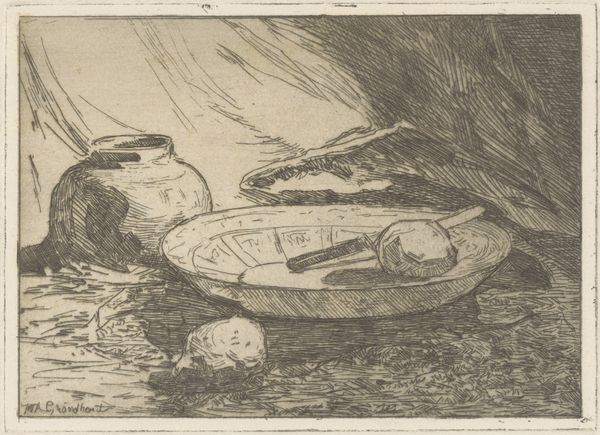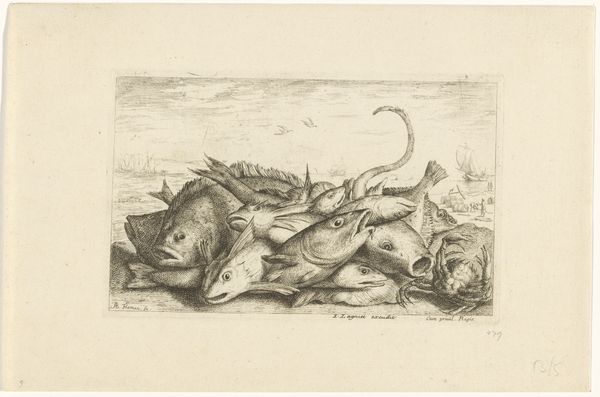
print, etching
# print
#
etching
#
charcoal drawing
#
realism
Dimensions: height 238 mm, width 300 mm
Copyright: Rijks Museum: Open Domain
Editor: Here we have Auguste Le Gras’ “Aquarium,” an etching from 1887. The dark, almost claustrophobic composition is what strikes me. It’s like we’re peering into the shadowy depths, and it evokes a feeling of…mystery, almost unease. How do you interpret this work? Curator: It’s interesting that you pick up on the sense of unease. I think that has a lot to do with the rise of public aquariums in the late 19th century. These spaces, meant for entertainment and education, were also sites where ideas about evolution, natural selection, and the power dynamics between humans and nature were actively negotiated. Do you see that reflected in the composition here? Editor: I see it now that you mention it. There's something voyeuristic, about our perspective, like we're studying these creatures trapped within the glass. The dark tones enhance this feeling, right? Curator: Exactly! And remember, etching was often used for scientific illustration. This piece plays with the idea of scientific observation and the act of display. It questions the authority and purpose behind putting nature on view for the public, and at whose expense. Is this intended as entertainment, a scientific endeavor, or something else entirely? Editor: That makes me see the aquarium in a different light. It wasn’t just a harmless spectacle, but also a cultural space loaded with social and ethical meaning. Curator: Precisely. Le Gras’ etching compels us to consider what aquariums truly represent—our ambition to display, categorize, and ultimately, dominate the natural world. Editor: I learned a lot about the socio-political forces that affect art! Thanks for the guidance. Curator: My pleasure. It's been a productive discussion; I look forward to learning more alongside you!
Comments
No comments
Be the first to comment and join the conversation on the ultimate creative platform.
